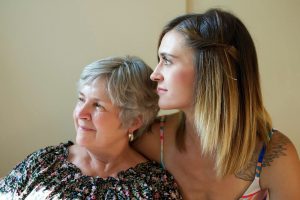You’ve got Low Vision and you need some ways of minimizing the effects on your daily activities. One of the best ways to do this is with lighting. Changing the lighting in your home or office can make a significant, positive impact on your functional vision.
Check out Dr. Peter DeGraziano, OD, FAAO, FIALVS's tips for making life with Low Vision more manageable.
Home Is Where the Light Is
 Home may be where the heart is, but the lighting is pretty important, too. You may have fixtures that are elegant and classy, fun and colorful, or basic and functional. But no matter how they look on the outside, the bulbs inside are central to how you spend your days and nights.
Home may be where the heart is, but the lighting is pretty important, too. You may have fixtures that are elegant and classy, fun and colorful, or basic and functional. But no matter how they look on the outside, the bulbs inside are central to how you spend your days and nights.
Using brighter bulbs can give you better vision clarity, so that you can easily maneuver around the things in your home. Using dimmer bulbs may help prevent uncomfortable reactions to strong lights and glare, or simply make it easier to recognize the faces of the people around you.
What's Your Type?
Thanks to advancements in technology and interior design, there are various types of lighting to choose from without compromising on style, décor, or functionality
Let’s briefly review the 4 most common types of light bulbs:
Incandescent: Although close to natural sunlight, this type of light tends to be concentrated on a few areas, leaving others in a bit of shadow or glare. It is also no longer mass produced since the mid-2000's when more energy efficient bulbs hit the market.
Halogen: A type of incandescent bulb that is more energy efficient with a longer life. It provides a strong light with great illumination in a room and is best for viewing contrast between objects, images, and surroundings.
Fluorescent: A happy combination of brightness and safety, these bulbs are manufactured in a variety of brightness levels and colors. They are used in both commercial and residential spaces and in the outdoors and indoors, so they offer a lot of versatility.
LEDs: Perhaps the most popular type of lighting due to its many applications, Light-Emitting Diodes (or LEDs, for short) are the most energy efficient and longest-lasting bulbs on the market. They are best used for when you need light concentrated on a certain spot for a specific function or task. They also come in a variety of colors and designs.
In addition to choosing the right light bulbs, it’s important to understand the difference between lux, lumens, wattage, and CRI (Color Rendering Index). That’s because they can have a big impact on the quality of life for people with vision difficulties.
Lux is a way of measuring how intense a light is, also known as ‘illumination’. For example, a typical living room probably has 50 lux, while a grocery store or shopping mall may have closer to 750 lux.
Lumen means how much light is emitted from a particular lighting source. The higher the lumen, the brighter the light.
Wattage is the amount of energy that a product consumes, similar to a mobile phone battery’s usage.
Color Rendering Index, or CRI, is how a lighting source displays color when compared to natural light. So you may see something in the sunlight that looks dark green, while in artificial light, it may appear a much brighter shade of green.
Both Lux and CRI are the most important factors for your lighting needs because they affect how you see the world.
Keep Doing What You Love
With Macular Degeneration and other eye diseases, it’s essential to use different kinds of lighting for the things you do every day, like reading, writing, watching TV, going online, shopping, or cooking. Bright lights may work best for doing housework, while low lights may be the most comfortable for reading or watching TV.
Dr. Peter DeGraziano, OD, FAAO, FIALVS will be happy to recommend the light bulbs that are the most comfortable for doing the things you love.
Timing Is Everything
Day or night can make a huge difference in your Low Vision lighting needs. For example, putting your living room lights on a timer so that the lights go on in the evenings and off before going to sleep makes your life just a little bit easier. Automatic dimmers let you control the brightness of lights, while smart sensors or motion-detectors can turn on or off simply by walking near them.
Maybe It's The Lamp
When you need light to view something close up, try using a swivel lamp. It lets you move the light exactly where you’d like it to be. Flexible floor lamps give the right amount of illumination without causing eye strain or headaches, especially helpful for Glaucoma patients. Special Low Vision lamps let you control magnification, position, or even the color of the light, from a soft yellowish white to a brighter pure white.
Mimic The Sun

Natural sunlight can be either beneficial or harmful for Low Vision patients, depending on how mild or severe their case may be. For some, sunlight can be helpful when reading a book or writing. For those with sensitivity to light, the brightness can cause a glare or pain. In these cases, patients should use lamps that simulate sunlight, without the harmful side effects.
Don't Leave Home Without It
It’s a fast-paced world out there. Take your lighting devices with you! A small pen light can help you read a menu in a dark restaurant, find your keys in a parking garage, or open the door when coming home at night. Even in brighter light, a handheld lighting device can give you a small, focused light wherever and whenever you need it most.
Distance Makes The Light Grow Fonder
Many Low Vision patients have trouble with distance vision. Viewing an image or object from a distance is just as important as the level of brightness in the room. That’s why it’s necessary to use Low Vision lighting tools that are completely adjustable so they aren’t placed at a fixed distance. Being able to move the neck of a desk lamp, for instance, makes it easier to see a book or photo with greater clarity.
Go ahead and try these lighting tips to help your day-to-day functioning with Low Vision. Dr. Peter DeGraziano, OD, FAAO, FIALVS can tell you where to buy these kinds of light bulbs and devices. If you have any questions or concerns, speak with our staff at Peter E DeGraziano, OD, PC and we’ll be glad to help.
